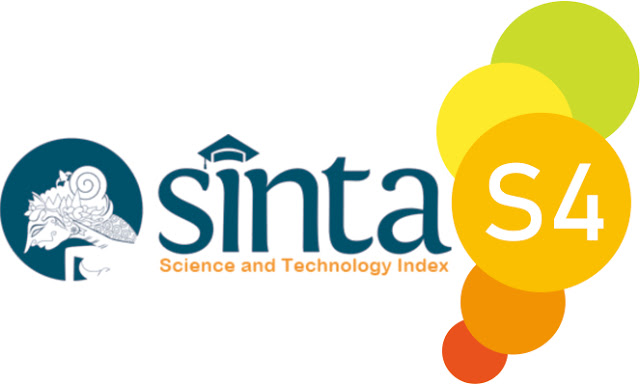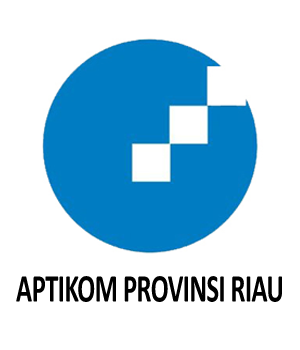IMPLEMENTATION OF SALES INFORMATION SYSTEM OF INDONESIAN SPICES AT PT.INDO REMPAH
Abstract
Spices and herbs are biological resources that have long played an important role in human life. In the current pandemic where our bodies have an immune system that can manage the body's power, but the factors of age, lifestyle and regular use of drugs can affect the level of body power, therefore this spice has been considered to provide health and this has led to the demand for spices. high enough. The continuous use of spices, both from the household sector to the industrial sector, makes consumers have to find or buy these spices every day to the market or to spice collectors for industrial consumers. To meet market needs and consumer needs directly, therefore the proposed solution to overcome this problem is to use e-commerce media. The system development model used in making this information system is the SDCL (System Development Life Cycle) waterfall (Waterfall) or classic life flow. The stages that are passed in the system analysis and design process include: system requirements analysis, design, code generator, testing and support. From the results of this study, it is hoped that the existence of this spice sales information system can help farmers, especially spice producers, in terms of increasing the selling power of their agriculture, making it easier to carry out promotions, sales transactions to produce sales reports.
Downloads
References
[2] A. U. Syuhendra, Hamdani, “Penjualan Online Berbasis E-Commerce Pada Toko Adhizzshop Dengan Menggunakan Woocommerce,” IDEALIS Indones. Jurnal. Inf. Syst., vol. 3, no. 1, pp. 26–33, 2020.
[3] F. E. Nugroho, “Perancangan Sistem Informasi Penjualan Online Studi Kasus Tokoku,” Simetris Jurnal Teknik Mesin, Elektro dan Ilmu Komputer., vol. 7, no. 2, p. 717, 2016, doi: 10.24176/simet.v7i2.786.
[4] S. S. Himawan, Asep Saefullah, “Analisa dan Perancangan Sistem Informasi Penjualan Online (E-Commerce) pada CV Selaras Batik Menggunakan Analisis Deskriptif,” Sci. J. Informatics, vol. 1, pp. 53–63, 2014, doi: https://doi.org/10.15294/sji.v1i1.3641.
[5] I. D. Lesmono, “Rancang Bangun Sistem Informasi Penjualan Sepatu Berbasis Website Dengan Metode Waterfall,” Swabumi, vol. 6, no. 1, pp. 55–62, 2018, doi: 10.31294/swabumi.v6i1.3316.
[6] D. Ardiansyah, W. Walim, D. Gunawan, and E. Fitriani, “Rancang Bangun Sistem Informasi Penjualan Perlengkapan Tidur (SIPPAT) Berbasis Web pada Fortun Barokah Karawang,” J. Inkofar, vol. 1, no. 1, pp. 68–79, 2019.
[7] M. A. Rizal and T. Misriati, “Perancangan Sistem Informasi Penjualan Pakaian Berbasis Web Pada Toko Uj Outlet,” J. Sisfokom (Sistem Inf. dan Komputer), vol. 7, no. 1, p. 9, 2018, doi: 10.32736/sisfokom.v7i1.281.
[8] H. S. Asfinoza, Shinta Puspasari, “Sistem Informasi Penjualan Pupuk Berbasis Web pada PT. Sri Aneka Karyatama,” J. Media Infotama, vol. 14, no. 1, p. 3, 2018.
[9] D. Gunawan, D. Puji, R. Andriani, and Susafa’ati, “Sistem Informasi Penjualan Berbasis Web Pada Restoran Caki Cake Karawang,” J. AKRAB JUARA, vol. 2018, no. 1–10, pp. 1–18, 2018.
[10] A. Wardani and R. Sari, “Perancangan Sistem Informasi Penjualan Suku Cadang Mobil Berbasis Web Studi Kasus : Kreasi Auto Parts,” J. Ilmu Pengetah. Dan Tenologi Komput., vol. 3, no. 1, pp. 145–152, 2017.
[11] N. & N. R. Iriadi, “Perancangan Sistem Informasi Penjualan Minuman Kemasan Berbasis Web Pada Toko Bambu Sejahtera Bekasi,” J. Khatulistiwa Inform., vol. V, no. 1, p. 42, 2017.
[12] S. Wasiyanti and D. Barkah, “Sistem Informasi Penjualan Baju Berbasis Web Pada Project Distro Depok,” J. Perspekt., vol. 16, no. 2, pp. 125–135, 2018.
[13] G. W. Sasmito, “Penerapan Metode Waterfall Pada Desain Sistem Informasi Geografis Industri Kabupaten Tegal,” Jurnal Informasi Pengembangan. IT, vol. 2, no. 1, pp. 6–12, 2017.
[14] M. S. Rossa Ariani Sukamto, Rekayasa Perangkat Lunak Terstruktur dan Berorientasi Objek. Bandung: INFORMATIKA, 2018.
[15] D. Puspitasari, “Sistem Informasi Perpustakaan Sekolah Berbasis Web,” Jurnal Pilar Nusa Mandiri Vol. XII, vol. 12, no. 2, pp. 227–240, 2016.
This is an open-access article distributed under the terms of the Creative Commons Attribution-ShareAlike 4.0 International License which permits unrestricted use, distribution, and reproduction in any medium. Users are allowed to read, download, copy, distribute, search, or link to full-text articles in this journal without asking by giving appropriate credit, provide a link to the license, and indicate if changes were made. All of the remix, transform, or build upon the material must distribute the contributions under the same license as the original.















